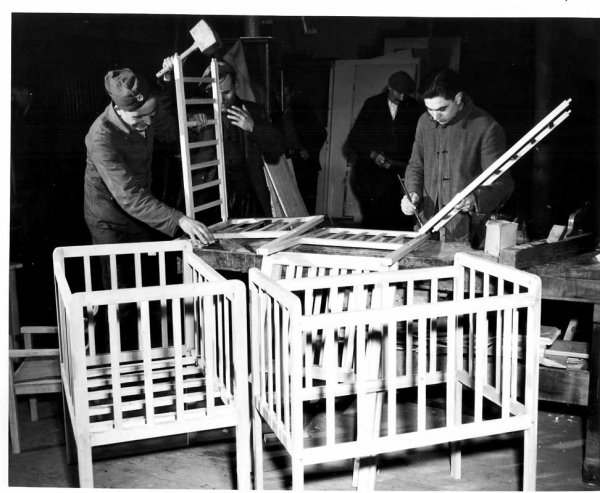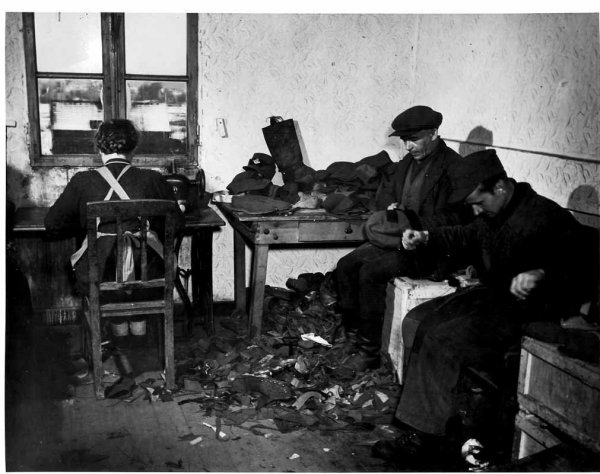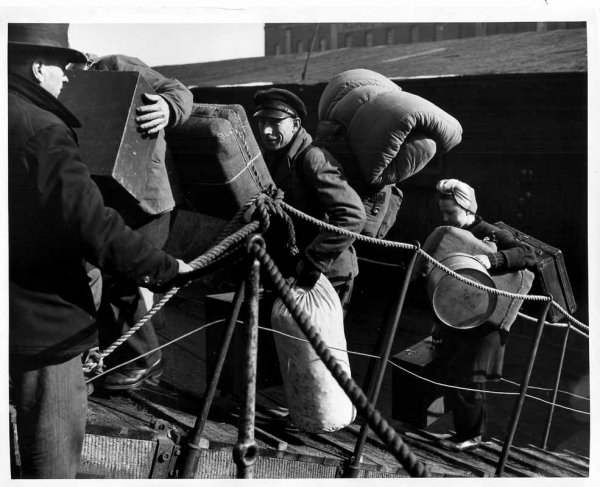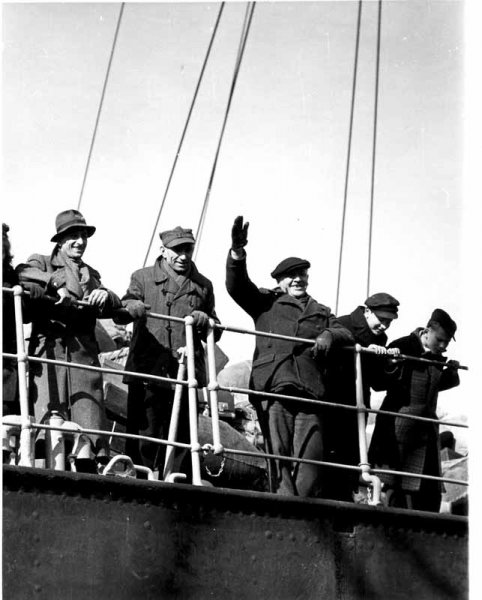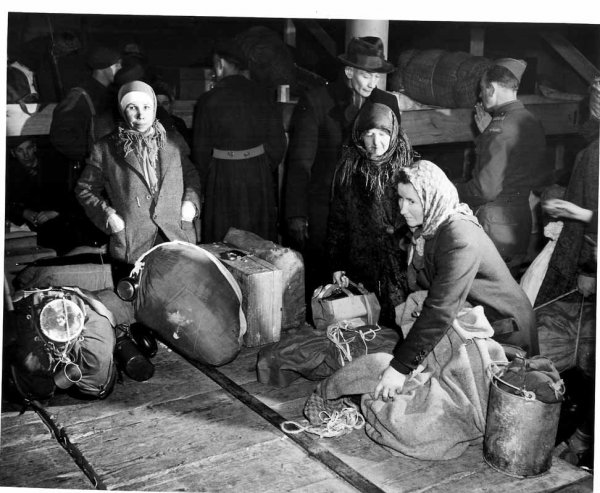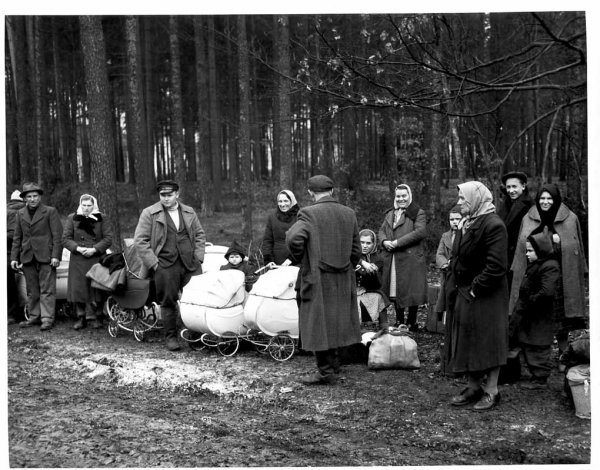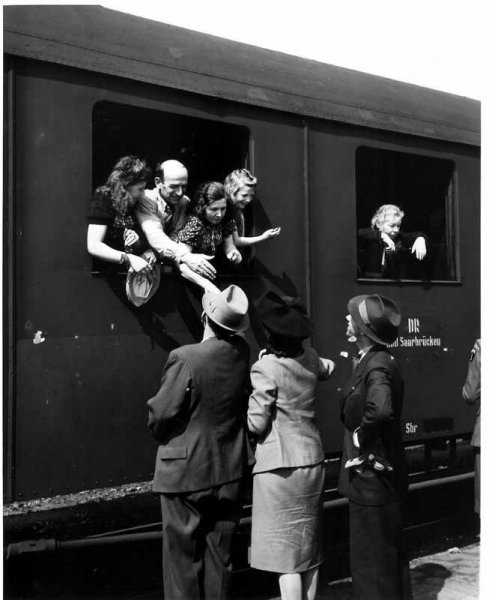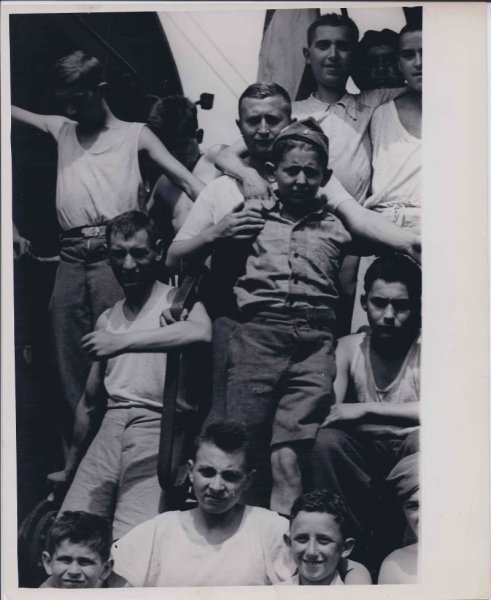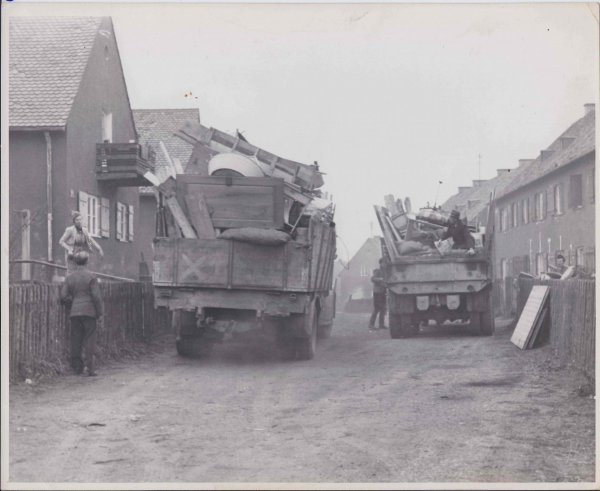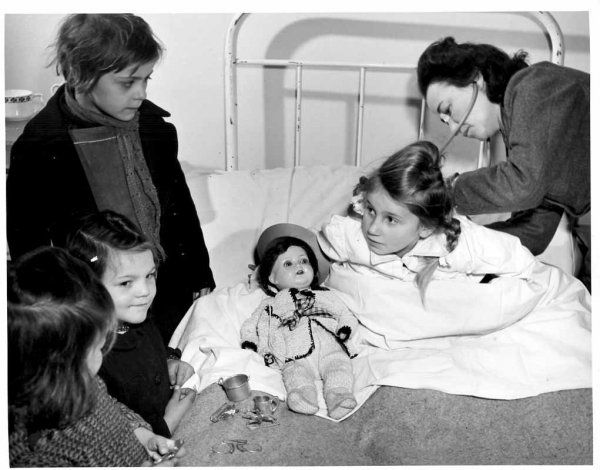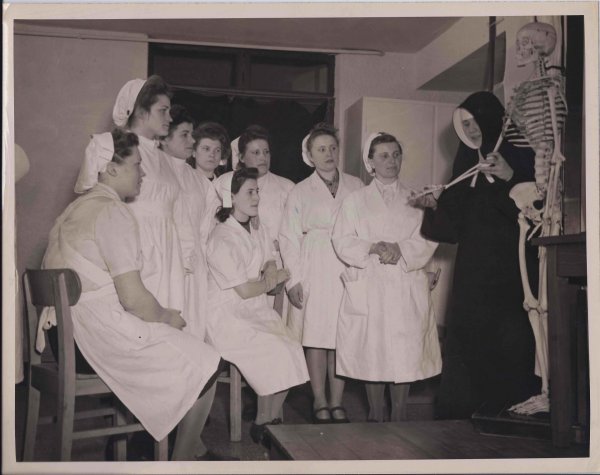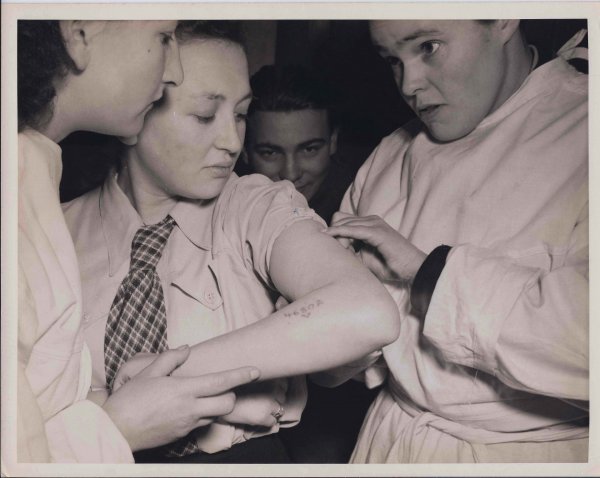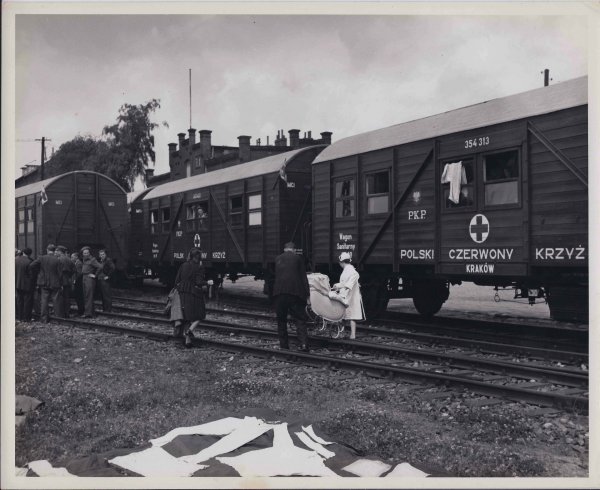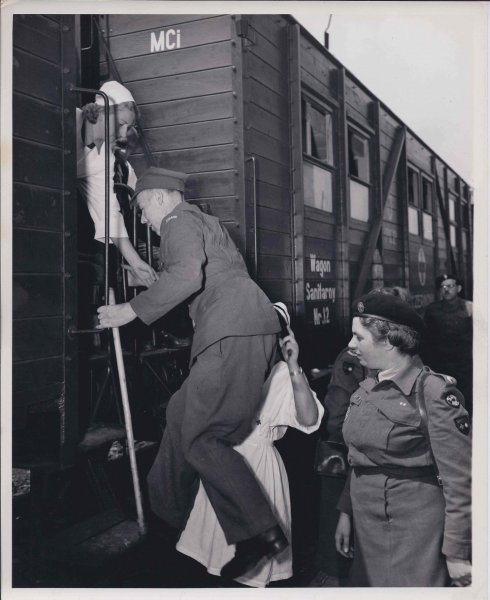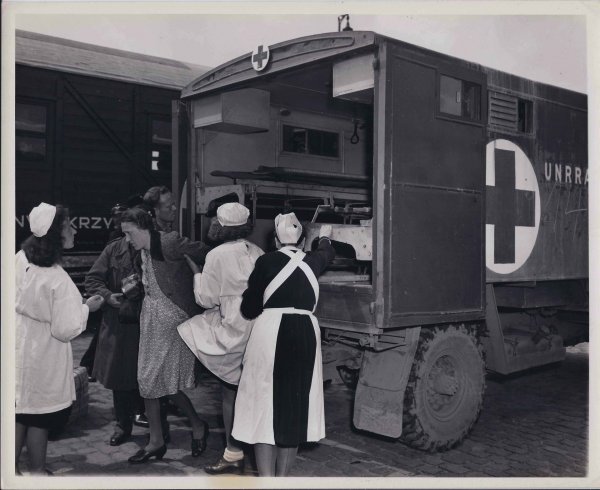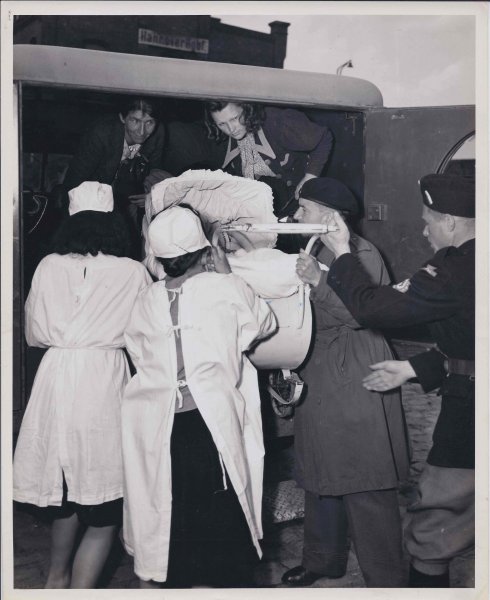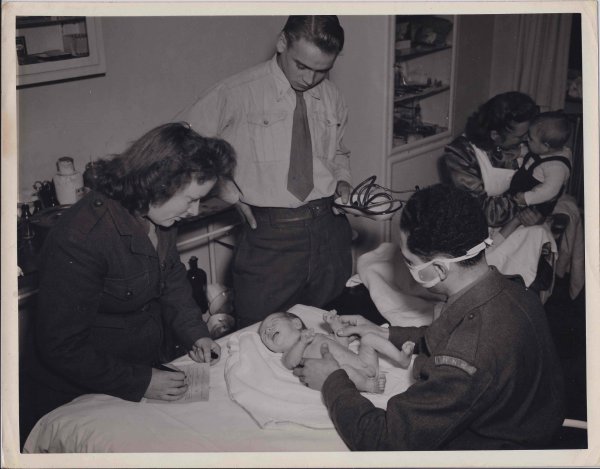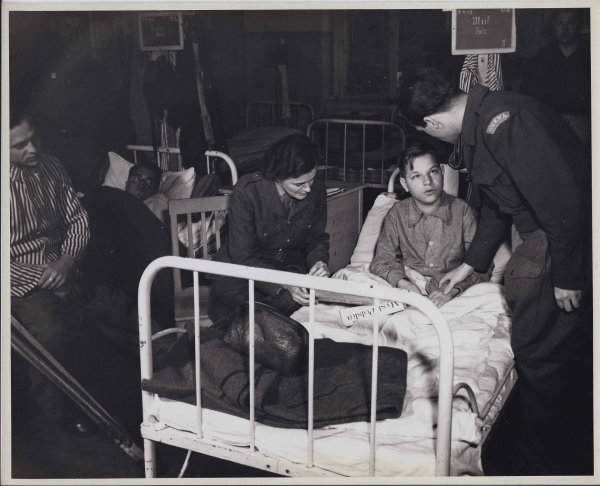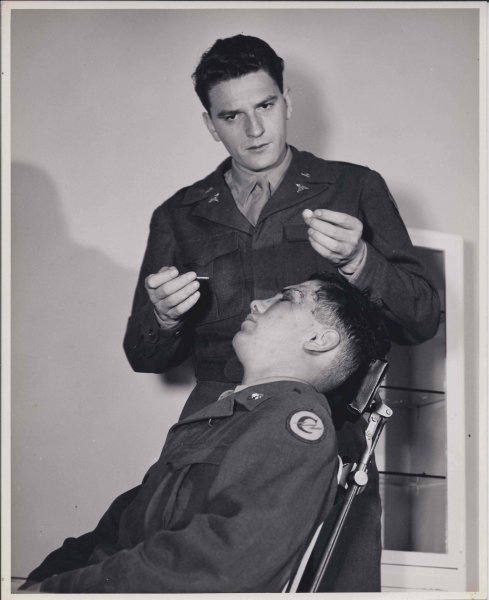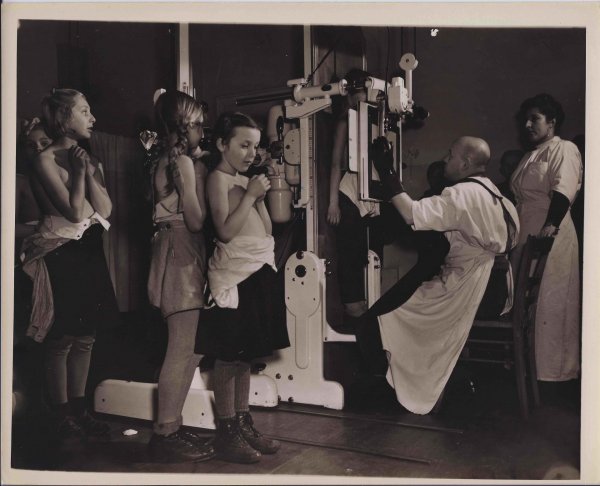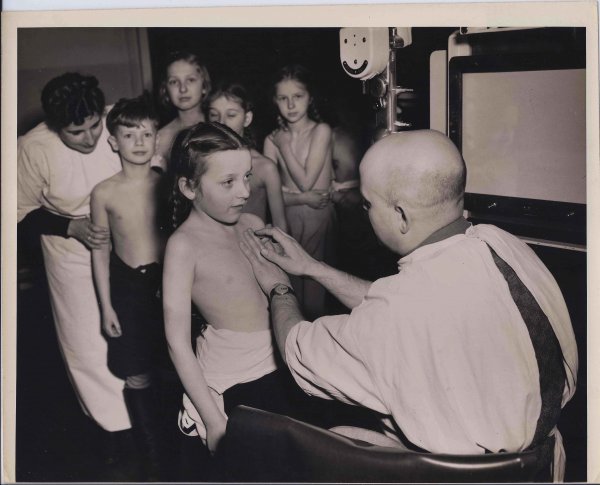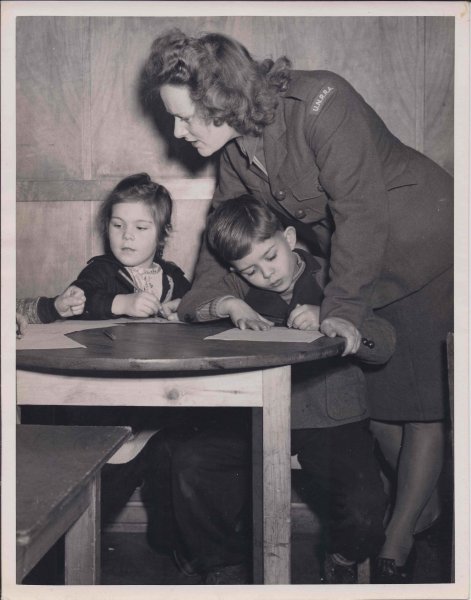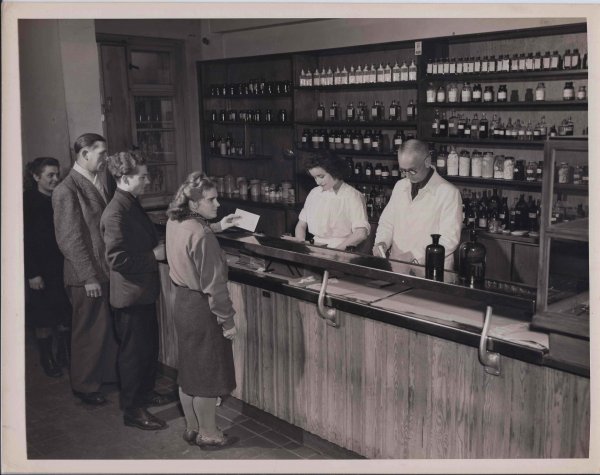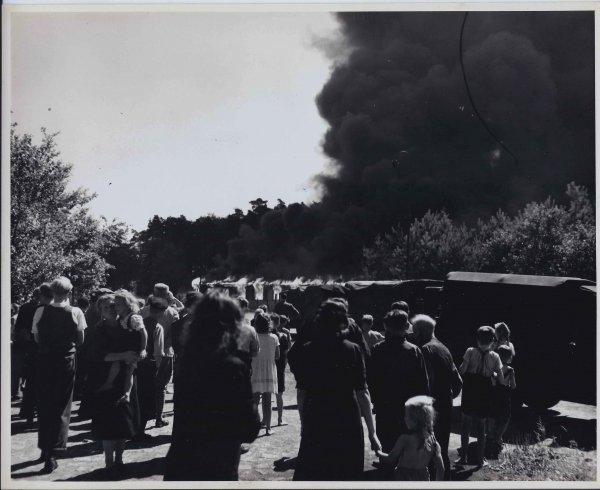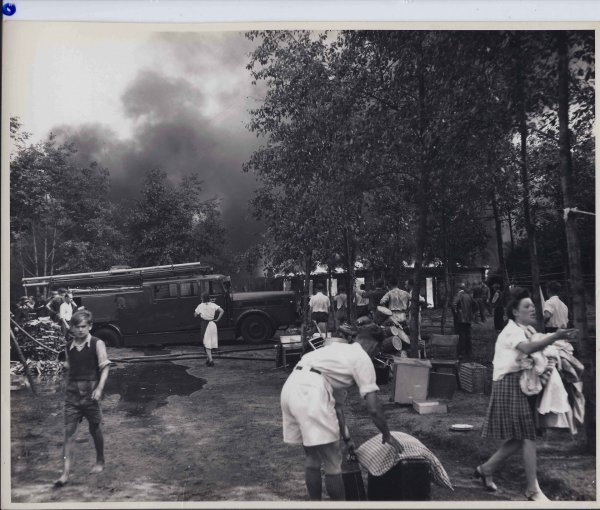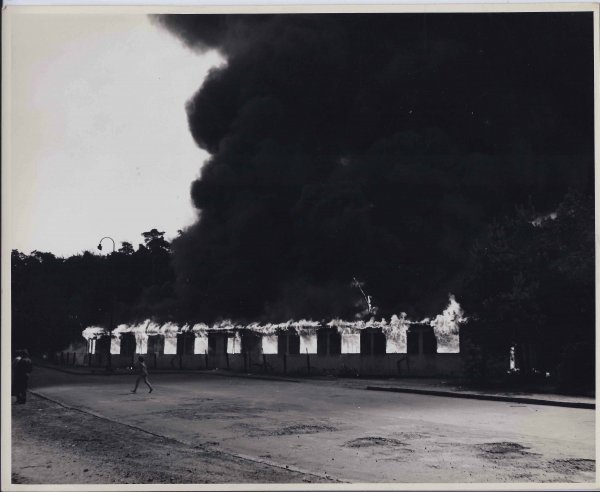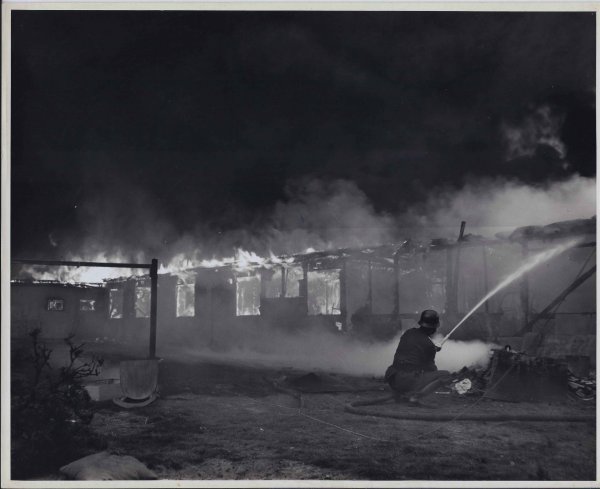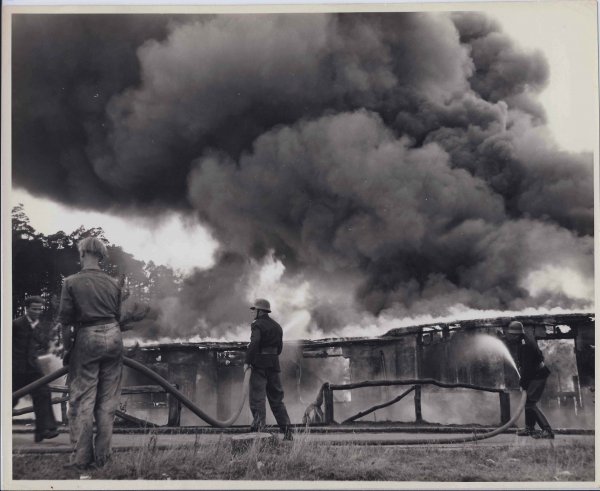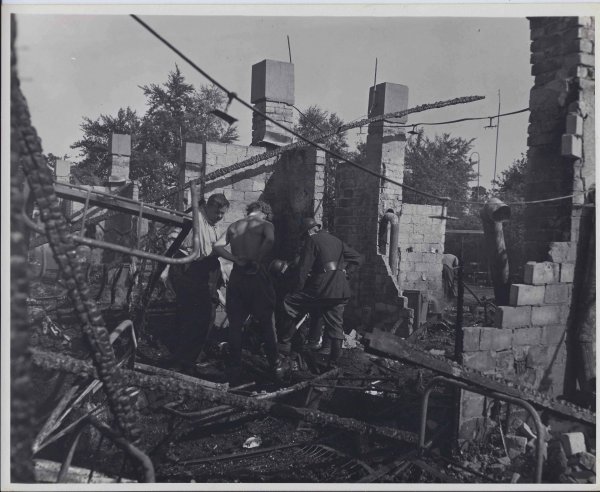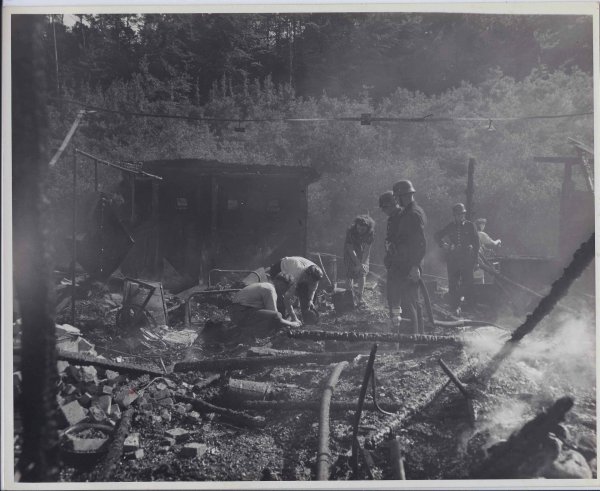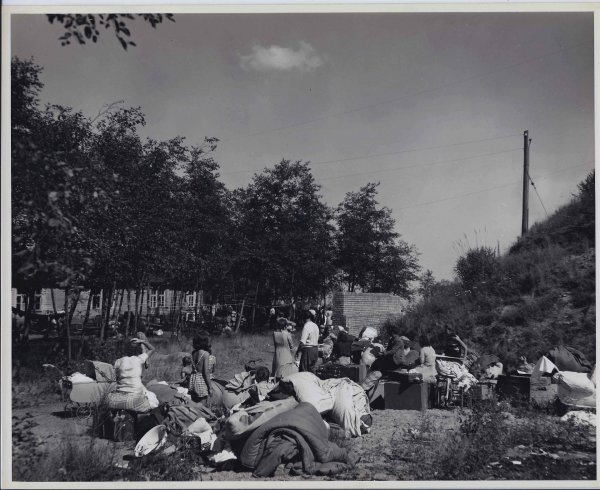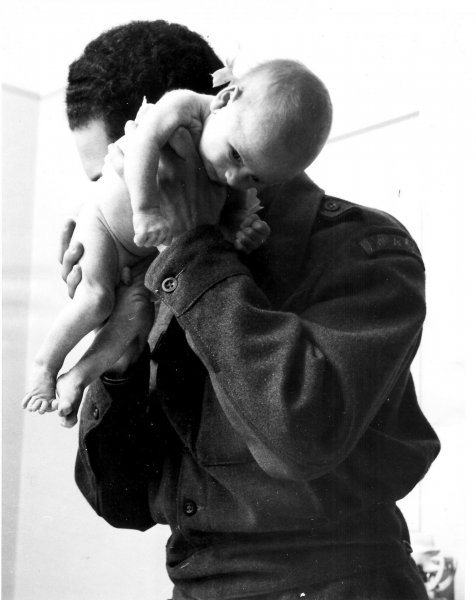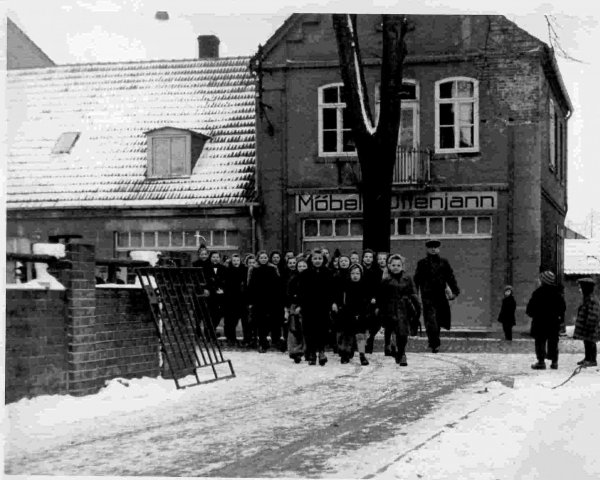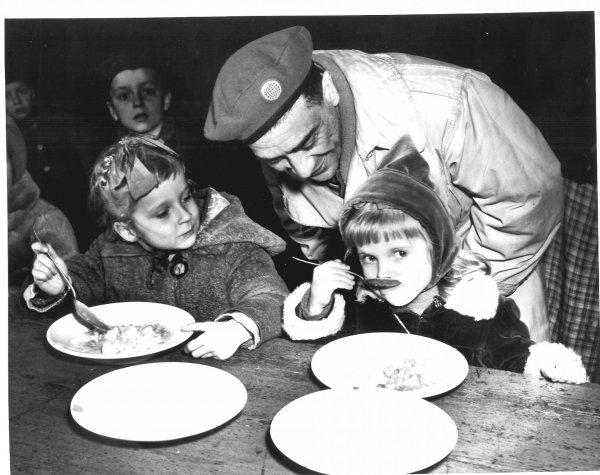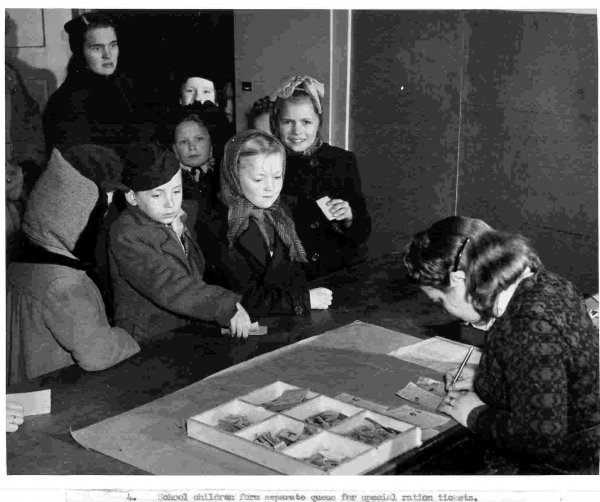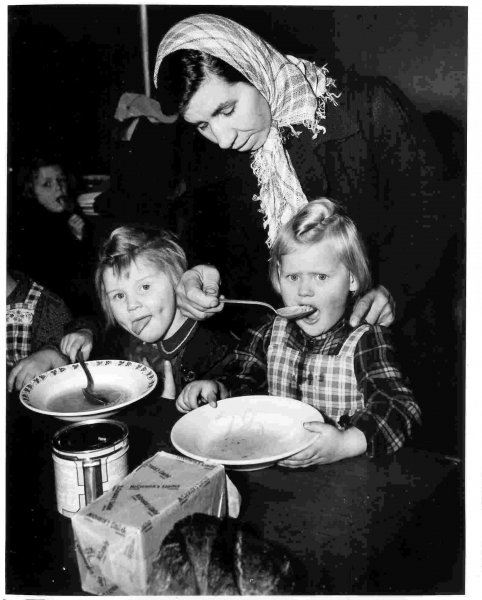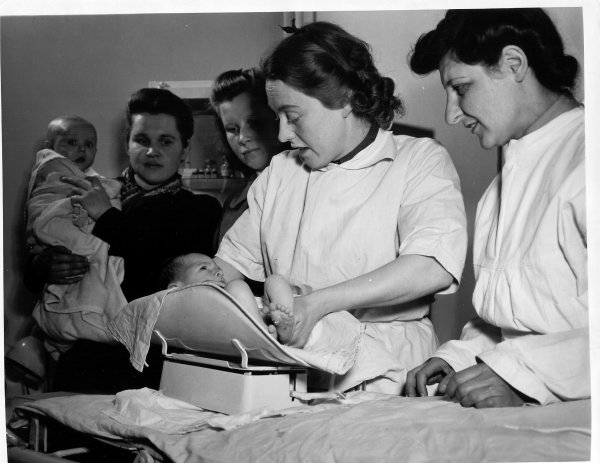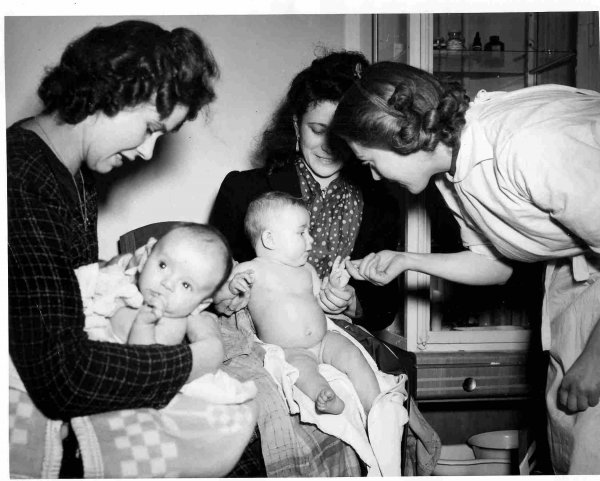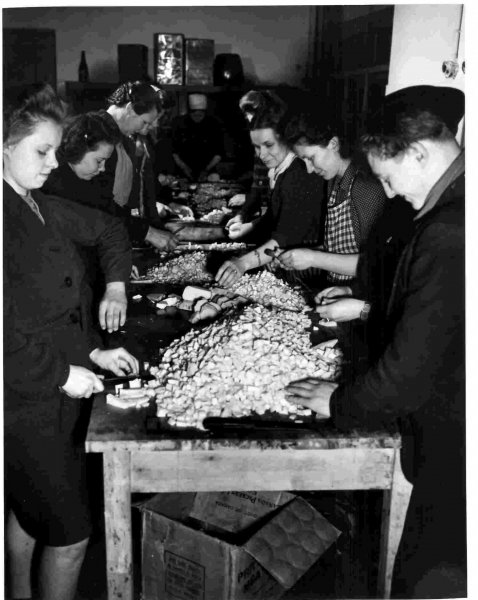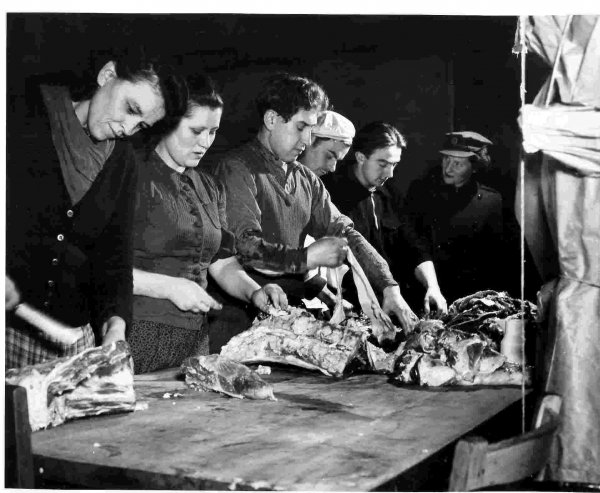Norman Weaver
War photos
This is a tiny selection of several thousand monochrome photos taken at the end of the second World War whilst working as official photographer for UNRRA. Copies of these photos are held and displayed at the Imperial War Museum in London.
Workshops
This first group of photos shows various workshops. Scrap tin cans are being recycled into jewellry, teapots, etc., scrap wood is being used to make cots and toys (although, rather poignantly, leaning on the wall behind the man on the right painting the Noah's Ark figures, pieces of wood have been shaped ready to be made into rifles), and parts of shoes are being salvaged.
Repatriation of displaced Poles
The next set of photographs shows a few images of the repatriation of 1,400 Polish displaced persons. The first shows the embarkation at Lubeck docks, on their way to Danzig, and my father has written on the back of one of these photos "most carried all they owned". These photos are followed by some showing the deported families travelling by road and rail, then awaiting their transit camp beside the railway track where they were offloaded, setting up temporary home for the next three days at Danzig, The last photo in this series shows a young girl being examined in a hospital in Danzig.
Buchenwald Concentration Camp
The following five photographs feature the first children to be freed from the notorious Buchenwald Concentration Camp near Weimar in 1945. Between April 1938 and April 1945, some 238,400 people of various nationalities, including 350 Western allied POWs were incarcerated in Buchenwald, one of the first and largest of the concentration camps on German soil. One estimate places the number of deaths in Buchenwald at 56,000.
Eviction of German civilians from their homes
The following five photos are from an envelope simply marked "Eviction of German civilians from their homes". The Imperial War Museum has dated these as having been taken in 1946, when German families were being moved to new German billets. One shows a small boy watching as the contents of his home is loaded onto a lorry, and another depicts an elderly couple loading what they can onto a handcart.
Medical
The next series of photographs come from an envelope simply marked "Medical". Some were taken at St Marien Hospital, in Bonn, where female medical students study medicine and dentistry, and some from inside the clinic at Bruweiler. There are also a series of photos which show casualties being transported on UNRRA vehicles to treatment centres, some of which were converted railway carriages.
UNRRA administration camp at Lubeck
The next set of photos were taken when a fire destroyed the UNRRA administration camp at Lubeck, Germany, in 1946. Despite the best efforts of firemen, the camp was almost entirely destroyed, and the refugees found themselves displaced once more, having quickly salvaged whatever belongings they could carry.
More war photographs
My father also worked alongside photographer Maxine Rude, information about whom can be viewed University of Minnesota Center for Holocaust & Genocide Studies.
A photo of my father and Maxine Rude working together in the photographic laboratory is shown below, together with a compilation of additional photos included on the above link:
Additional Photographs Taken by Norman Weaver
Additional photos of the DP Camps by Norman Weaver, colleague of Maxine Rude. Courtesy of Weaver's daughter, Sarah Starsmore, Isle of Wight, England.


